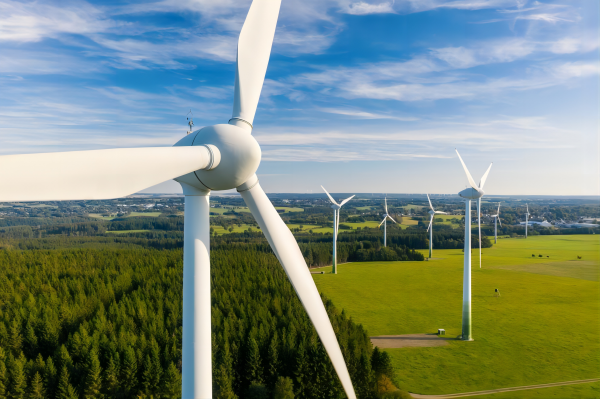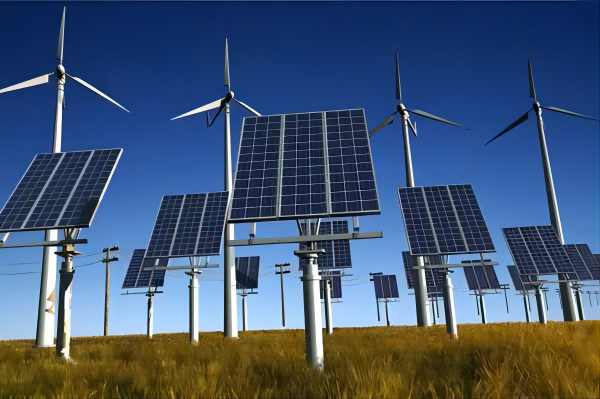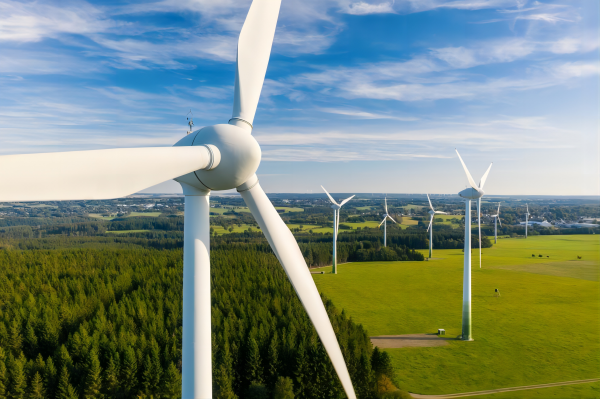
Photo by engel.ac, Shutterstock
Renewable energy technologies are necessary to support a sustainable energy transition. However, renewable technologies bring their own resource consumption and environmental impacts, including end-of-life waste generation. Wind turbines deployed in the 1990s and 2000s are now nearing the end of their lives; and while some components can be prepared for re-use or recycled, the management of others – such as composite blades, which have many complex layers and are large, heavy and unwieldy – pose industrial challenges. Because of this, blade waste is typically sent to landfill or incinerated: a loss of valuable resources that also pollutes the environment. By 2030, an estimated 570 million tonnes (Mt) of blade waste will be generated in the EU alone.
According to the EU’s Waste Framework Directive, landfilling should be a last resort after prevention, preparation for re-use, recycling and recovery. The EU has initiatives in place to support such sustainable growth and waste prevention – including the 2020 Circular Economy Action Plan, which targets how products are designed, consumed and disposed of in order to prevent the generation of waste and mitigates impacts by keeping resources recirculating within the EU economy for as long as possible. In terms of renewables, the Renewable Energy Directive provides a legal framework for the EU’s clean energy transition, while the European Green Deal prioritises renewable energy technologies with a target of no net greenhouse gas emissions and climate neutrality by 2050. This means that the renewable energy technologies themselves should have a far lower climate and overall environmental burden during their life cycle.
This study explores alternative management techniques for wind-turbine blade waste, to assess which can optimise material recovery and minimise environmental impact. It evaluates the correlation between the ‘circularity’ (share of material fed back into the economy) and carbon footprint of seven end-of-life management solutions for turbine blades, split into ‘circular’ (1–5) and ‘linear’ (6–7) management scenarios:
1. Repurposing (re-using a product or its parts for functions or applications other than the original).
2. Grinding (downsizing process to break down composites into powder or fibrous matter). This process recovers two different materials: a resin-rich powder used instead of limestone in the production of construction materials, and fibre-rich fractions that replace the use of raw material in new composites.
3. Solvolysis (a chemical recycling process that causes polymers to dissolve and recover fibres from the resins).
4. Pyrolysis (a process by which material is heated until it decomposes, generating oil, gases and inert fibres).
5. Co-processing in cement kilns (using blade waste to produce clinker, replacing a portion of fossil fuels and minerals).
6. Incineration (waste combustion producing ashes and electricity).
7. Landfilling (waste disposal in landfills for inert waste).
The researchers study the management of three large (71-metre) glass-fibre reinforced polymer (GFRP) turbine blades across their entire life cycle. They analyse circularity using a ‘product circularity indicator’ and carbon footprint by calculating the climate change impact.
The results indicate that blade recycling via solvolysis is the most circular (0.77) solution – up to 83% more resource-efficient than the other alternatives. While solvolysis is the most energy intensive solution, it recovers 90–100% of materials with 50–60% quality. In terms of carbon footprint across their life cycle, solvolysis is also the most low-carbon solution (225–503 tonnes CO2 equivalent (t CO2-eq)1 per three blades).
Blade repurposing, grinding, and cement co-processing all have a similar circularity (0.52–0.55) and recover similar amounts of materials (52–60%), while incineration and landfilling have a notably reduced circularity (0.22) because they do not preserve or recover material2. Blade repurposing, grinding and cement co-processing have similar carbon footprints (499–615 t CO2-eq).
Pyrolysis is also a less circular solution (0.42); while material is recovered, the process is energy intensive and one-third of the resulting material is of low quality and has to be subsequently incinerated. In terms of carbon footprint, pyrolysis ranges from 566–744 t CO2-eq, which could be up to 19% higher than incineration or landfilling (623 t CO2-eq) and up to 231% GW impact compared to solvolysis.
The results indicate that the end-of-life processes allowing the recovery of more high-quality materials appear to have the greatest potential for circularity and carbon reduction compared to other alternatives. Therefore, the researchers recommend industrial and methodological innovations to support circularity and sustainability. Possibilities range from new research, innovation and development projects to scale up solvolysis3, to new blade design techniques and to circular cooperation with other industries to improve circularity – automotive, aviation, construction – to facilitate blade waste and material recovery at the end-of-life, including the implementation of complementary circular-economy solutions, such as blade repurposing into alternative products.
The performance of solvolysis and pyrolysis is expected to change in the near future as these processes are upscaled and able to recover higher-quality materials. To address this, the researchers also carried out a ‘sensitivity analysis’ to evaluate how likely the results are to vary in future. For instance, increasing the process efficiency of pyrolysis by 20% would bring a 14% improvement in circularity and 5% reduction in carbon footprint; however, improving efficiency without improving the quality of recovered material does not lead to significant resource or carbon savings. The quality of the recovered materials should increase by at least 50% to generate significant global warming savings, which are much more noticeable for solvolysis (15–24% carbon savings in pyrolysis, versus 27–52% savings in solvolysis).
1. CO2 equivalent (CO2-eq): a metric used to express global warming potential, which converts other polluting gas emissions into the equivalent warming amount of carbon dioxide. Eurostat definition: https://ec.europa.eu/eurostat/statistics-explained/index.php?title=Glossary:Carbon_dioxide_equivalent
2. The researchers note that their methodology does not capture the circularity aspects of recovered energy during these processes (for instance, the heat generated during incineration, which can be used to generate electricity).
3. Solvolysis is currently the least-developed solution, and requires high initial development to become commercially viable. However, it has the greatest potential for circularity and carbon reduction of the methods studied, and can recover large quantities of high-quality material.
Diez-Canamero, B. and Mendoza, J. M. F. (2023) Circular economy performance and carbon footprint of wind turbine blade waste management alternatives. Waste Management 164: 94–105.
“Science for Environment Policy”: European Commission DG Environment News Alert Service, edited by the Science Communication Unit, The University of the West of England, Bristol.
The contents and views included in Science for Environment Policy are based on independent, peer reviewed research and do not necessarily reflect the position of the European Commission. Please note that this article is a summary of only one study. Other studies may come to other conclusions.
Publication date
19 October 2023
Author





